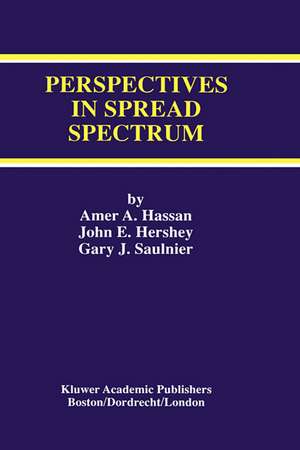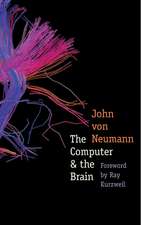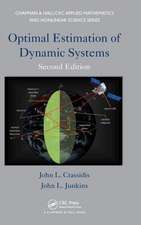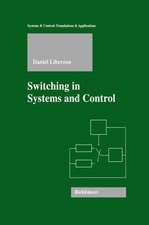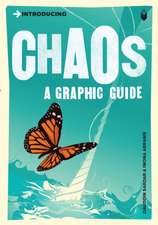Perspectives in Spread Spectrum: The Springer International Series in Engineering and Computer Science, cartea 459
Autor Amer A. Hassan, John E. Hershey, Gary J. Saulnieren Limba Engleză Hardback – 31 aug 1998
Perspectives in Spread Spectrum is divided into six chapters. The first chapter deals with sequence spreading design. There is not a single metric for design of spreading sequences; rather, the design is ideally tailored to the specific scenario of usage. This chapter delves into recent and very promising synthesis work. The second chapter deals with OFDM techniques. As channels become wider and trans-channel fading (or jamming) becomes frequency selective across the band, OFDM techniques may provide a powerful alternative design perspective. The third chapter is a generalization of the venerable Walsh functions. A new modulation scheme, Geometric Harmonic Modulation, GHM for short, is reviewed and characterized as a form of OFDM. From GHM, a further generalization of the Walsh functions is derived for non-binary signalling. The fourth chapter is concerned with some new and exciting results regarding the follower jammer paradigm. A counter-countermeasure technique is reviewed, notable for its counterintuitive characteristic which can be understood from a simple yet elegant game framework. The fifth chapter recounts some results pertaining to random coding for an optical spread spectrum link. The technique is basedon laser speckle statistics and uses a coherent array of spatial light modulators at the transmitter but allows the receiver to be realized as a spatially distributed radiometric and therefore incoherent structure. The sixth and final chapter looks at an important and interesting application of spread spectrum to accurately locate a wideband, ‘bent pipe’, satellite transponder. It is, in a strong sense, an inverted GPS technique.
Perspectives in Spread Spectrum serves as an excellent reference and source of ideas for further research, and may be used as a text for advanced courses on the topic.
Din seria The Springer International Series in Engineering and Computer Science
- 24%
 Preț: 1041.98 lei
Preț: 1041.98 lei - 20%
 Preț: 643.50 lei
Preț: 643.50 lei - 18%
 Preț: 1225.62 lei
Preț: 1225.62 lei - 18%
 Preț: 965.02 lei
Preț: 965.02 lei - 20%
 Preț: 646.12 lei
Preț: 646.12 lei - 18%
 Preț: 948.79 lei
Preț: 948.79 lei - 20%
 Preț: 646.62 lei
Preț: 646.62 lei - 15%
 Preț: 637.46 lei
Preț: 637.46 lei - 20%
 Preț: 643.83 lei
Preț: 643.83 lei - 18%
 Preț: 949.23 lei
Preț: 949.23 lei - 20%
 Preț: 644.48 lei
Preț: 644.48 lei - 20%
 Preț: 994.92 lei
Preț: 994.92 lei - 20%
 Preț: 645.97 lei
Preț: 645.97 lei - 18%
 Preț: 946.87 lei
Preț: 946.87 lei - 20%
 Preț: 995.57 lei
Preț: 995.57 lei - 18%
 Preț: 956.99 lei
Preț: 956.99 lei - 20%
 Preț: 644.98 lei
Preț: 644.98 lei - 15%
 Preț: 649.54 lei
Preț: 649.54 lei - 18%
 Preț: 950.21 lei
Preț: 950.21 lei - 18%
 Preț: 1221.38 lei
Preț: 1221.38 lei - 18%
 Preț: 957.62 lei
Preț: 957.62 lei - 15%
 Preț: 643.99 lei
Preț: 643.99 lei - 18%
 Preț: 948.47 lei
Preț: 948.47 lei - 18%
 Preț: 947.35 lei
Preț: 947.35 lei - 20%
 Preț: 1284.65 lei
Preț: 1284.65 lei - 20%
 Preț: 1628.31 lei
Preț: 1628.31 lei - 20%
 Preț: 1285.78 lei
Preț: 1285.78 lei
Preț: 640.55 lei
Preț vechi: 753.60 lei
-15% Nou
Puncte Express: 961
Preț estimativ în valută:
122.58€ • 133.11$ • 102.97£
122.58€ • 133.11$ • 102.97£
Carte tipărită la comandă
Livrare economică 23 aprilie-07 mai
Preluare comenzi: 021 569.72.76
Specificații
ISBN-13: 9780792382652
ISBN-10: 079238265X
Pagini: 163
Ilustrații: IX, 163 p.
Dimensiuni: 155 x 235 x 15 mm
Greutate: 0.42 kg
Ediția:1998
Editura: Springer Us
Colecția Springer
Seria The Springer International Series in Engineering and Computer Science
Locul publicării:New York, NY, United States
ISBN-10: 079238265X
Pagini: 163
Ilustrații: IX, 163 p.
Dimensiuni: 155 x 235 x 15 mm
Greutate: 0.42 kg
Ediția:1998
Editura: Springer Us
Colecția Springer
Seria The Springer International Series in Engineering and Computer Science
Locul publicării:New York, NY, United States
Public țintă
ResearchCuprins
1. Spreading Sequence Design.- 2. Ofdm Spread Spectrum Communications.- 3. Generalization Of Walsh Functions.- 4. Frequency-Hopped Ss With Follower Jamming.- 5. Spatial Optical Cdma.- 6. Spread Spectrum Overlay and Ranging.- Appendices.- A-The Channel’s Wideband Effects.- A.1 Introduction.- A.2 Geostationary Satellites and The Doppler Effect.- A.3 Ionospheric Delay Dispersion.- A.4 Multipath.- References.
